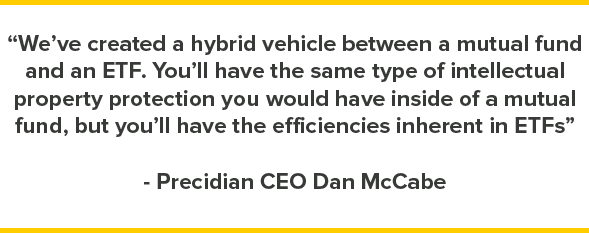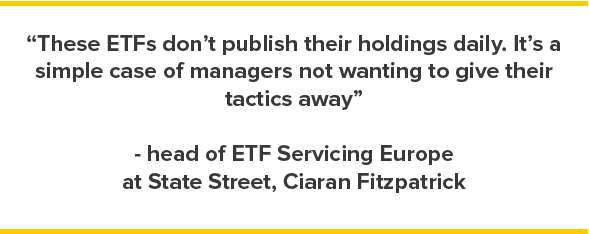

Actively managed ETFs are an attempt to get investors back in love with stock-picking fund managers. Passive investments have been beating actively managed funds for years. This has seen the reputations of fund managers well and truly dented.
Likewise, fund managers have been wary of getting into ETFs. Daily disclosure rules around these products risk giving away their strategy or ‘secret sauce’. But how to stop outflows to passive funds? It looks like actively managed ETFs could help answer that question.
“We’ve created a hybrid vehicle between a mutual fund and an ETF. You’ll have the same type of intellectual property protection you would have inside of a mutual fund, but you’ll have the efficiencies inherent in ETFs,” said Precidian CEO Dan McCabe in 2019.


What is an active ETF?
An actively managed ETF is an exchange-traded fund managed by an individual fund manager or team. Like other ETFs, active ETFs have a benchmark index, but the fund manager can deviate from the index as they see fit.
Like passive ETFs investors can buy or sell them on an exchange, but active ETF investments are only disclosed every quarter. In effect, you have something in-between a mutual fund and a traditional ETF.
This ‘semi-transparent’ model allows fund managers to showcase their stock-picking wizardry, but conceal their strategies from investors.
“These ETFs don’t publish their holdings daily. It’s a simple case of managers not wanting to give their tactics away,” Ciaran Fitzpatrick, head of ETF Servicing Europe at State Street explained to the FT.


What are the advantages?
Like other exchange funds, actively managed ETFs enjoy liquidity and price transparency. As they are a traded product, it’s easy for investors to get in and out.
Unlike passive ETFs, a financial professional is managing the ETF on a day-to-day basis. In theory, this could lead to index-beating gains. It also gives the fund manager the flexibility to tweak the ETF’s investments. For example, in volatile markets, they could shift capital away from underperforming assets.
What are the disadvantages?
Lack of transparency is the obvious drawback. In the Brown Brothers Harriman survey, 85% of investors said they wanted their ETFs to disclose holdings at least weekly. A lack of transparency also means that it will be unclear if market makers are able to quote accurate prices.


Fund managers are also under pressure to beat the market index. Unlike a passive ETF that tracks its market index, active ETFs are only as good as the fund managers’ picks.
Investopedia points out that actively managed ETFs can break fundamental investment principles like diversification. A fund manager might favour a certain sector, meaning the product could be less diversified than a passive ETF, such as one that tracks the FTSE 100, as a whole.
What else should investors know?
Passive ETFs are still king, for the time being. Morningstar data shows at the end of January ETF assets stood at $4.4tn, while active assets were $150 billion.


But active assets are in demand. According to the Brown Brothers Harriman survey, active ETFs are now the most requested form of ETFs, along with ESG products.
It should go without saying that this type of ETF depends on the fund manager. As Blue Tractor founder Terence Norman notes “It’s not a wrapper that will turn a bad manager into a good one.”
Source: This content has been produced by Opto trading intelligence for Century Financial and was originally published on cmcmarkets.com/en-gb/opto
Disclaimer: Past performance is not a reliable indicator of future results.
The material (whether or not it states any opinions) is for general information purposes only and does not take into account your personal circumstances or objectives. Nothing in this material is (or should be considered to be) financial, investment or other advice on which reliance should be placed. No opinion given in the material constitutes a recommendation by Century Financial or the author that any particular investment, security, transaction or investment strategy is suitable for any specific person.
Century Financial does not endorse or offer opinion on the trading strategies used by the author. Their trading strategies do not guarantee any return and Century Financial shall not be held responsible for any loss that you may incur, either directly or indirectly, arising from any investment based on any information contained herein.
















